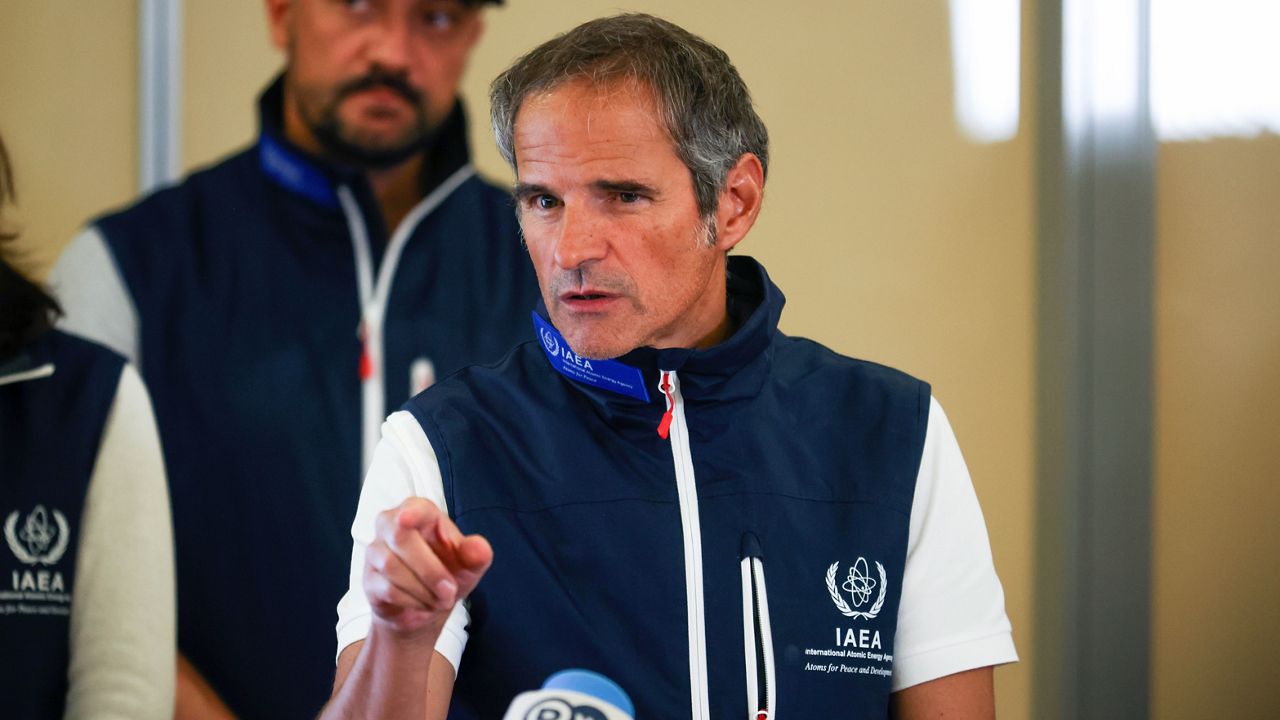The head of the U.N. nuclear watchdog agency said Wednesday he met with Ukraine's and Russia's foreign ministers in a bid to establish a safety and security zone around a nuclear plant in southeastern Ukraine that is Europe's largest. The Zaporizhzhia power plant has faced almost daily shelling and bombardment, raising fears of a nuclear accident.
Rafael Grossi, director-general of the International Atomic Energy Agency, said that as a result of the separate meetings with Ukraine’s Dmytro Kuleba and Russia’s Sergey Lavrov, work has already begun on establishing and shaping the zone. He said he hopes to visit Kyiv soon, and “perhaps later on" go to Russia.
“Given the urgency of the situation and the gravity of what’s going on in the field we have to move fast," Grossi said. Both nations, he said, share "a conviction that the establishment of the zone is indispensable.”
“The mere fact that the two foreign ministers are sitting down with me and are listening to our ideas, I think it’s a good indicator that there is a very strong solid base for this thing to happen,” he said.
Grossi said negotiating a safety zone is complex, and issues that need to be addressed include protecting the plant, how the zone would be implemented and how an agreement would be enforced.
The IAEA chief said the Zaporizhzhia plant was shelled and attacked earlier Wednesday, and a “projectile” hit a pipeline in a pool where spent nuclear fuel is cooled, and it stopped working. Technical experts were able to use other available capacities to continue pumping water into the pool, he said, stressing that this is just one example of the serious issues at the facility which has also seen external power repeatedly restored and interrupted.
Over the past weeks, Ukraine and Russia have traded blame over shelling at and near the plant.
“No one would ever run a plant like this in normal circumstances with all these problems,” Grossi said. “We are playing with fire and continue to play with fire.”
Russian troops seized the Zaporizhzhia plant in the southeastern city of Enerhodar, in early March, soon after their Feb. 24 invasion of Ukraine, but its nuclear operations continue to be run by its Ukrainian staff.
Grossi led an IAEA team that visited Zaporizhzhia in late August and proposed the establishment of a safety zone soon after. He left two IAEA experts at the plant to monitor the situation and said the IAEA is in constant contact with them trying to ensure that their working conditions are the best possible, but stressed again “we are in a situation which is not normal.”
The Russian capture of Zaporizhzhia renewed fears that the largest of Ukraine’s 15 nuclear reactors could be damaged, setting off another emergency like the 1986 Chernobyl accident, the world’s worst nuclear disaster, which happened about 110 kilometers (65 miles) north of Kyiv.
Grossi was also asked about the IAEA’s dealings with Iran and its latest report earlier this month which said it believes Iran has further increased its stockpile of highly enriched uranium to one short, technical step away from weapons-grade levels.
The nuclear agency voiced increasing concerns over Tehran’s lack of engagement with a probe into man-made uranium particles found at three undeclared sites in the country that has become a sticking point in efforts to revive the 2015 nuclear deal between Iran and six world powers.
Grossi said there are many things that Iran has observed, but “there are these three big question marks” that have to be answered and “are not going to be wished away.”
“I hope in the next few days to be able to re-establish some contacts so that we can continue with this process which has been lingering for a long time,” he said.
Asked why he hadn’t met with Iranian leader who are attending U.N. events this week, he replied, “Well, perhaps you should ask them.”
Speaking at the General Assembly's leaders' meeting, Iran’s president insisted Wednesday that his country is serious about reviving a deal meant to prevent it from acquiring a nuclear bomb. But Ebrahim Raisi questioned whether Tehran could trust America’s commitment to any eventual accord. The United States pulled out of a previous deal in 2018 under President Donald Trump.



